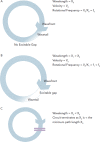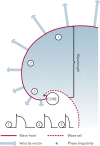Mechanisms of Atrial Fibrillation - Reentry, Rotors and Reality
- PMID: 26835073
- PMCID: PMC4711504
- DOI: 10.15420/aer.2014.3.2.90
Mechanisms of Atrial Fibrillation - Reentry, Rotors and Reality
Abstract
Atrial fibrillation (AF) is the most common sustained arrhythmia encountered in clinical practice, yet our understanding of the mechanisms that initiate and sustain this arrhythmia remains quite poor. Over the last 50 years, various mechanisms of AF have been proposed, yet none has been consistently observed in both experimental studies and in humans. Recently, there has been increasing interest in understanding how spiral waves or rotors - which are specific, organised forms of functional reentry - sustain human AF and how they might be therapeutic targets for catheter-based ablation. The following review describes the historical understanding of reentry and AF mechanisms from earlier in the 20th century, advances in our understanding of mechanisms that are able to sustain AF with a focus on rotors and complex fractionated atrial electrograms (CFAEs), and how the study of AF mechanisms has resulted in new strategies for treating AF with novel forms of catheter ablation.
Keywords: Atrial fibrillation; arrhythmia mechanisms; complex fractionated atrial electrograms; pulmonary vein isolation; reentry; rotor.
Figures








References
-
- Mayer AG. Rhythmical Pulsation in Scyphomedusae. Washington, D.C.: Carnegie Institute of Washington; 1906.
-
- Garrey W. The nature of fibrillary contraction of the heart. Its relation to tissue mass and form. Am J Physiol. 1914;33:397–414.
-
- Nattel S. New ideas about atrial fibrillation 50 years on. Nature. 2002;415:219–26. - PubMed
-
- Jalife J, Berenfeld O, Mansour M. Mother rotors and fibrillatory conduction: a mechanism of atrial fibrillation. Cardiovasc Res. 2002;54:204–16. - PubMed
LinkOut - more resources
Full Text Sources
Other Literature Sources

